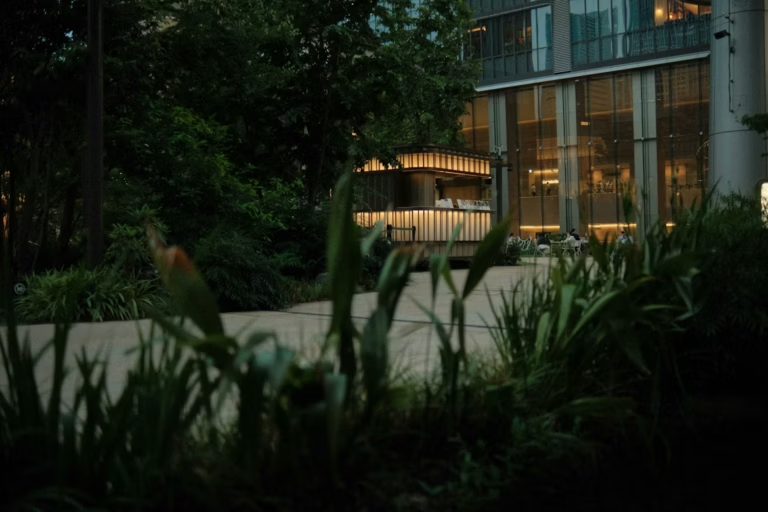Crime Prevention Through Environmental Design (CPTED) is a widely recognised approach to improving safety through smarter design of the built environment. Rather than relying only on security technology, CPTED focuses on making spaces naturally safer by design.
What Are CPTED Guidelines?
CPTED guidelines are structured principles used to assess or design environments to prevent crime and reduce antisocial behaviour. They are commonly required by local councils and planning authorities as part of development applications, especially where public access is involved.
The Core Principles of CPTED
The effectiveness of CPTED comes from applying several foundational principles:
- Natural Surveillance – Promoting visibility and reducing concealed areas
- Natural Access Control – Guiding movement and discouraging unauthorised access
- Territorial Reinforcement – Creating clear ownership over space
- Maintenance and Management – Keeping areas clean, functional, and cared for
- Support for Legitimate Use – Encouraging positive activity through activation
- Lighting and CCTV – Improving visibility and monitoring capacity
- Landscape Management – Ensuring vegetation supports visibility, not concealment
These principles are applied during both the planning of new spaces and the improvement of existing ones.
When Are CPTED Reports Required?
A CPTED report may be required by a local council or requested during:
- Development applications or new building projects
- Upgrades to public open spaces, parks, or streetscapes
- Community safety reviews or crime prevention initiatives
- Investigations into repeat vandalism, loitering, or unsafe environments
- Applications for funding safety or place-making projects
Even when not mandated, CPTED assessments add measurable value and reduce long-term operational risk.
What Should a CPTED Report Include?
A well-prepared CPTED report follows a logical structure, providing insight into both current risks and practical improvement options.
Executive Summary
This outlines the purpose of the assessment and the most important findings and recommendations.
Site Overview and Context
This includes information on the location, use, operating hours, public access, and any known safety issues or historical incidents.
Photographic Audit
Photos are used to highlight key concerns or strengths in visibility, access, concealment, lighting, and maintenance. Commentary is added for context.
Detailed CPTED Assessment
Each CPTED principle is addressed in its own section, including:
- Areas of strong performance
- Risks or design concerns
- Site-specific observations
Risk Summary
Key vulnerabilities are summarised, including areas that may attract antisocial behaviour or provide concealment for crime.
Recommendations and Prioritisation
All recommended actions are listed and categorised into short-, medium-, or long-term priorities. These may include:
- Lighting upgrades
- Vegetation management
- CCTV improvements
- Fencing or barrier adjustments
- Community activation suggestions
Framework and Compliance References
The report concludes by referencing CPTED best practice, ISO 31000 (risk management), or local council guidelines as applicable.
What Does a CPTED Consultant Actually Do?
A CPTED consultant brings specialist expertise in assessing how physical spaces influence behaviour and safety. Their role includes:
- Conducting on-site inspections, often during daylight and after dark
- Analysing spatial layout, pedestrian flow, lighting, and visibility
- Reviewing past crime data or community complaints where available
- Providing clear, actionable recommendations supported by photographic evidence
- Advising architects, designers, developers, or councils throughout the process
Consultants translate CPTED principles into real-world solutions suited to each environment.
What Makes a Good CPTED Report?
A good CPTED report is not just a tick-box exercise. It should be:
- Site-specific – Reflecting the unique characteristics and risks of the location
- Photographically supported – Showing clear evidence of findings
- Plain language – Avoiding technical jargon for easy comprehension
- Aligned with local planning frameworks – Supporting smoother approvals
- Actionable – Providing realistic, cost-conscious solutions
Who Should Engage a CPTED Consultant?
CPTED assessments benefit a range of stakeholders, including:
- Local governments and public asset managers
- Developers and architects
- School administrators and education planners
- Shopping centre and property managers
- Community safety and place activation officers
Whether you’re managing a project, applying for funding, or responding to community concerns, a CPTED report helps demonstrate a thoughtful, preventative approach to crime and safety.
How Smartsec Security Solutions Can Help
Smartsec Security Solutions provides CPTED consulting and assessments across Perth and WA. We offer:
- Independent, vendor-neutral advice
- CPTED reports suitable for planning submissions and internal reviews
- Integration of ISO 31000-aligned risk assessment where appropriate
- Practical recommendations tailored to budget, use case, and stakeholder needs
We’ve completed CPTED work for parks, laneways, school environments, community centres, retail precincts, and more.
Working With Us
We make the process simple. After confirming your scope, we’ll conduct a site visit, gather photographic evidence, and prepare a detailed report with prioritised recommendations. We can also support follow-up engagement with your design team or council if required.
Let’s Improve the Safety of Your Space
If you’re planning a development, reviewing public safety concerns, or upgrading an existing site, CPTED guidelines offer a structured way to design out crime and improve usability. Engaging a consultant ensures your report is accurate, compliant, and impactful.
To request a CPTED assessment or discuss your project, visit our Security Consulting Services page.



